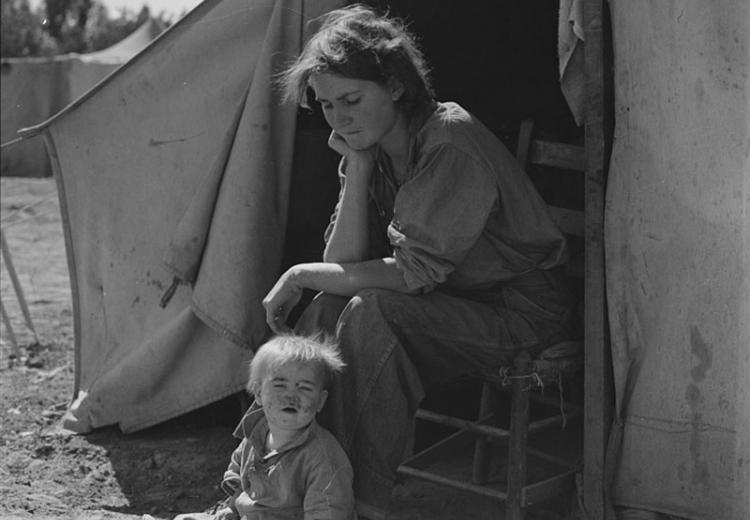Dust Bowl Days

Eighteen-year-old mother from Oklahoma, now a California migrant.
"On the fourteenth day of April of nineteen thirty five,
There struck the worst of dust storms that ever filled the sky:
You could see that dust storm coming, the cloud looked deathlike black,
And through our mighty nation, it left a dreadful track...
This storm took place at sundown and lasted through the night,
When we looked out this morning we saw a terrible sight:
We saw outside our windows where wheat fields they had grown
Was now a rippling ocean of dust the wind had blown.
It covered up our fences, it covered up our barns,
It covered up our tractors in this wild and windy storm.
We loaded our jalopies and piled our families in,
We rattled down the highway to never come back again."
— Woody Guthrie (1912-1967), from "Dust Storm Disaster"
The ballads of Woody Guthrie, the novels of John Steinbeck and the WPA photographs of artists such as Dorothea Lange have embedded images of the Dust Bowl in the American consciousness. Introduce this dramatic era in our nation's history to today's students through photographs, songs and interviews with people who lived through the Dust Bowl. Help your students understand the problems Americans were facing during the Great Depression.
Guiding Questions
What can be learned from photographs, songs, interviews and other archival documents from the Dust Bowl era?
Learning Objectives
Identify problems ordinary Americans faced during the Great Depression.
Evaluate examples of the attempts of the government and citizens to solve these problems.
